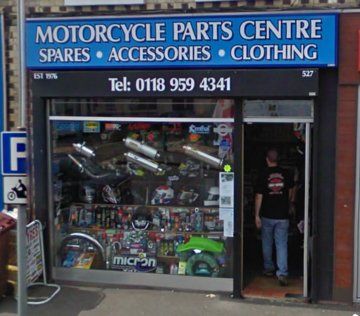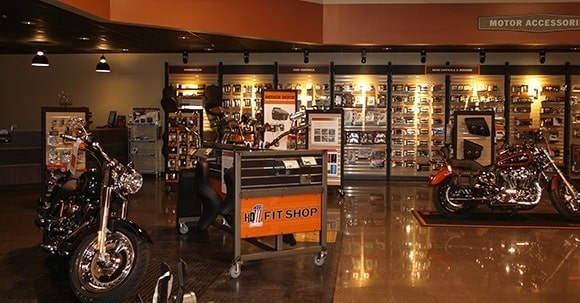See Our Motorcycle Shop for Professional Recommendations and High Quality Products
See Our Motorcycle Shop for Professional Recommendations and High Quality Products
Blog Article
Comprehending the Vital Components of a Bike: A Comprehensive Overview for Fanatics
For bike enthusiasts looking to raise their riding experience and ensure their bikes run smoothly, recognizing the vital components of a motorcycle is critical. Each component, from the engine's elaborate functions to the critical function of the braking devices, not only impacts efficiency however likewise security and convenience. This overview will go through the essential parts that every cyclist must recognize with, enabling educated options in both maintenance and prospective upgrades. As we begin this expedition, one must ask: how does each part communicate to create the seamless ride every fanatic looks for?
Engine Elements

The camshaft plays a critical role in controlling the timing of the engine's valves, guaranteeing the specific opening and closing essential for efficient gas and air intake, in addition to exhaust expulsion. This timing is essential to keeping optimal engine performance and effectiveness. Furthermore, the carburetor or gas shot system, depending upon the motorbike design, is accountable for blending air with fuel in the proper proportion for burning.
The air conditioning system, either air or liquid-based, works to maintain the engine's temperature within operational limits, protecting against overheating and guaranteeing longevity - motox parts nz. Each element, meticulously designed and incorporated, adds to the seamless procedure of the engine, defining the motorcycle's power output and total efficiency
Transmission System
Indispensable to the bike's capability, the transmission system makes sure effective power transfer from the engine to the wheels. This system consists of several critical parts, including the clutch, transmission, and last drive, each playing a crucial duty in equating the engine's power right into movement. The clutch, generally operated by a hand lever, offers to disengage the engine and involve from the transmission, permitting for smooth gear changes and regulated velocity.
The gearbox, usually described as the transmission appropriate, includes a collection of equipments that bikers can manually shift via to change the bike's speed and torque output. These gears are set up in a sequence that makes it possible for the motorbike to speed up smoothly and keep ideal engine efficiency across different rates. Many bikes use a sequential transmission, requiring the cyclist to change equipments in a fixed order.
Braking Systems
While comprehending the transmission system is vital to using a motorbike's power, similarly crucial is the capacity to manage and quit that power effectively, which is where braking systems enter play. Brakes are important for security and efficiency, providing the motorcyclist with the necessary control to navigate numerous terrains and conditions. Normally, motorbikes include two sorts of stopping systems: disc brakes and drum brakes.
Disc brakes are much more widespread in modern-day bikes due to their superior performance. They contain a brake disc, caliper, and pads. When turned on, the caliper squeezes the brake pads versus the spinning disc, converting kinetic energy right into heat, therefore slowing the wheel. This system provides much better warm dissipation, consistent performance, and he said improved stopping power, particularly in wet problems.
Alternatively, drum brakes, though less common, are still found in some motorcycles. They work by pushing brake footwear versus the internal surface of a drum connected to the wheel. While typically less effective in heat dissipation and quiting power, drum brakes are easier and more affordable.
Comprehending these braking systems' subtleties permits motorcyclists to keep their motorcycles properly and value the design that makes certain effective and secure quiting.
Suspension and Guiding
Suspension and guiding systems are crucial elements that dramatically influence a bike's handling and experience comfort. The suspension system, consisting of forks at the front and shock absorbers at the back, soaks up road irregularities, improving security and control. Front forks, inverted or typically telescopic, compress and rebound to mitigate effects, while rear shock absorbers keep tire call with the roadway, vital for traction and safety.
Steering, focused around the handlebars, links the motorcyclist to the motorcycle's directional control. The steering head bearings ensure smooth operation, permitting accurate ability to move. Appropriate positioning and maintenance of these bearings are vital for predictable steering feedback and reducing cyclist fatigue.
The suspension's adjustability is one more vital facet; preload, damping, and rebound settings allow customization to fit different riding problems and styles. This adaptability is vital for maximizing performance, whether browsing city streets or taking on rugged routes. Advancements like electronic shock absorber use real-time modifications, improving experience top quality throughout diverse surfaces.

Electric Equipments
After making certain a smooth and controlled adventure through reliable suspension and guiding systems, focus turns to the electric systems, a pivotal aspect of modern motorbikes. These systems play an important duty not only in starting the engine yet also in powering different parts that boost the performance and safety of the bike.
At the heart of a motorcycle's electrical system is the battery, which shops electric power required for starting the engine and powering complementary systems - motorbike shop. The alternator or generator, combined with the rectifier-regulator, makes certain the battery continues to be charged while the motorbike functions, converting mechanical power into electrical power and maintaining voltage levels
The ignition system, one more critical component, is accountable for stiring up the air-fuel blend in the engine's cyndrical tubes. Modern motorcycles commonly use a digital ignition system, using higher efficiency and reliability contrasted to typical systems.
Illumination systems, including fronts lights, tail lights, and signs, are also vital, ensuring visibility and safety and security for the biker. Extra electronic elements such as sensing units, control units, and presents add to advanced features like gas injection monitoring, anti-lock stopping check over here systems (ABDOMINAL), and electronic control panels, additionally boosting the riding experience.
Final Thought
A complete comprehension of a bike's necessary parts, consisting of the engine, transmission system, stopping devices, suspension, guiding, and electric systems, is crucial for fanatics aiming to optimize performance, comfort, and safety and security. Proficiency of these components enables informed decisions regarding maintenance and upgrades, inevitably boosting the riding experience. By incorporating this knowledge, cyclists can guarantee their motorbikes run at peak efficiency and integrity, therefore making the most of both enjoyment and durability of their cars.
For motorbike enthusiasts looking to elevate their riding experience and guarantee their bikes run smoothly, recognizing the essential parts of a motorcycle is vital.Important to the motorbike's functionality, the transmission system ensures reliable power transfer from the engine to the wheels.While comprehending the transmission system is key to using a motorbike's power, equally crucial is the ability to regulate and stop that power properly, which is where braking devices come into play. Normally, motorbikes include 2 kinds of stopping systems: disc brakes and drum brakes.
A detailed comprehension of a motorcycle's necessary elements, consisting of the engine, transmission system, stopping systems, suspension, steering, and electric systems, is have a peek here crucial for fanatics intending to optimize safety and security, performance, and comfort.
Report this page